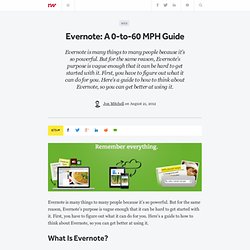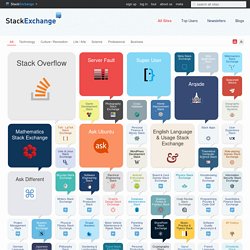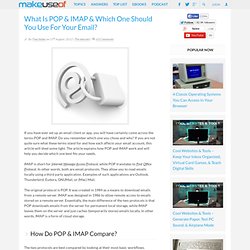

MIT's Introduction to Deep Learning: A Free Online Course. MIT has posted online its introductory course on deep learning, which covers applications to computer vision, natural language processing, biology, and more.

Students “will gain foundational knowledge of deep learning algorithms and get practical experience in building neural networks in TensorFlow.” Prerequisites assume calculus (i.e. taking derivatives) and linear algebra (i.e. matrix multiplication). Experience in Python is helpful but not necessary. The first lecture appears above. The rest of the course materials (videos & slides) can be found here. Introduction to Deep Learning will be added to our list of Free Computer Science Courses, a subset of our larger meta collection, 1,500 Free Online Courses from Top Universities. Juice Labs - Chart Chooser. Keyboard tutorial and typing test. 10 TECH Tips you should Definitely Not Miss. Typing. Computer History Museum. Free tools for teachers.
Welcome to RoboMind.net, the new way to learn programming. Evernote: A 0-to-60 MPH Guide. Evernote is many things to many people because it’s so powerful.

But for the same reason, Evernote’s purpose is vague enough that it can be hard to get started with it. First, you have to figure out what it can do for you. Here’s a guide to how to think about Evernote, so you can get better at using it. What Is Evernote? Evernote is an application that lets you create notes that sync between all your devices. Evernote has amazing search powers. The free version is already pretty powerful, but for $45.00 per year, you can upload up to 1GB per month, attach up to 50MB of just about anything to an individual note, you can go back in time and view past versions of notes, search inside PDFs and more. A “note” in Evernote can be text only, or it can include photos, audio or other attachments. Evernote allows for two levels of organization of individual notes. There are also a couple of tricks.
All Sites - Stack Exchange. Stack Overflow Stack Overflow Q&A for professional and enthusiast programmers Server Fault Server Fault Q&A for system and network administrators Super User Super User.

What Is POP & IMAP & Which One Should You Use For Your Email? If you have ever set up an email client or app, you will have certainly come across the terms POP and IMAP.

Do you remember which one you chose and why? If you are not quite sure what these terms stand for and how each affects your email account, this article will shed some light. The article explains how POP and IMAP work and will help you decide which one best fits your needs. IMAP is short for Internet Message Access Protocol, while POP translates to Post Office Protocol. In other words, both are email protocols. The original protocol is POP.
How Do POP & IMAP Compare? The two protocols are best compared by looking at their most basic workflows. POP Workflow: Connect to serverRetrieve all mailStore locally as new mailDelete mail from server*Disconnect *The default behavior of POP is to delete mail from the server. IMAP Workflow: As you can see, the IMAP workflow is a little more complex than POP. What Are The Advantages Of POP? How To Set Up Your Sketchup Model For Layout – (VIDEO) EmailEmail If you have Sketchup Pro, you have Layout.

It’s the companion software package for Sketchup that helps you prepare your model in 2D perspective views for printing out on paper. One of the most common tasks you’ll have to do for Layout is prepare your model for importing. It’s easy, and it’s best to spend a little more time in Sketchup to configure your scenes before you even open Layout. Prepare Scenes in Sketchup FIRST, then import into Layout Layout does have some built in camera tools, allowing you to “open” your imported Sketchup model right from Layout and orbit the model. When you are using Sketchup for architecture or construction, you’ll find there are many views you need to capture from each model.
Modeling View – This is just a scene to save my default modeling settings. Align perspectives with the Position Camera Tool, NOT section planes. I’ll just come right out and say it, I don’t like using section planes! . Save everything in the scene. 29 iPad Resources, Tutorials, and Guides Every Teacher Should Know about. iPad is gaining momentum in the educational sphere and might , in the near future, be integrated as a leading learning method. iPad is part of the gesture-based technology that is widely embraced by teens and which has pushed some school districts especially here in Canada and also in the States to start using the BYOD approach, for the costs of iPad and their apps is still relatively high.

As a teacher who has not yet tried mobile technology in his teaching, you might be wondering where and how to start. What resources to use ? Well, Educational Technology and Mobile Learning has some answers for you. We have collected a set of some useful resources on the use of iPads in the classroom which can help you dig your way into the world of mobile learning and teaching. 1- Teacher's Guide to The Use of iPads in Education 2- 8 Free Resources on The Use of iPads in Education 3- A Free Comprehensive Guide to iPad Apps Evaluation 4- A Quick Guide on Bloom's Taxonomy Apps for iPad. Code University - Google Code.